#Ferdinand von Arnim
Photo

Berlin Jagdschloss Glienicke
#berlin#germany#Architecture#history#prints#manor house#Hunting Lodge#Ferdinand von Arnim#19th century
6 notes
·
View notes
Text
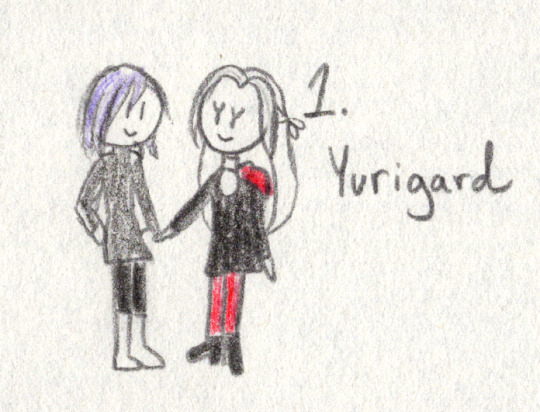






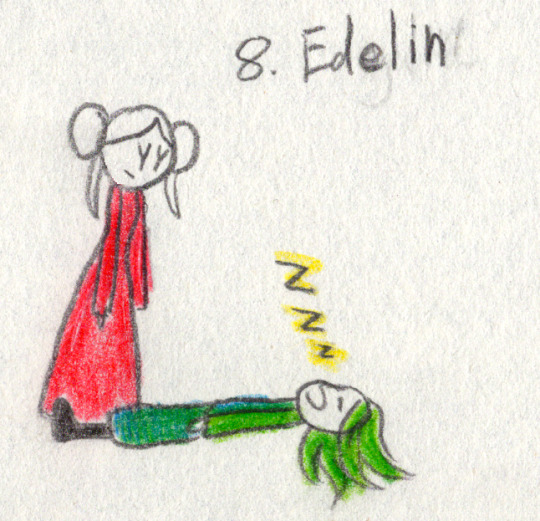


I'll draw the winners!
#FE3H#FE3H Poll#Yuri Leclerc#Edelgard Von Hresvelg#Sylvain Jose Gautier#Leonie Pinelli#Hilda Valentine Goneril#Dimitri Alexandre Blaiddyd#Byleth Eisner#Ferdinand Von Aegir#Flayn#Felix Hugo Fraldarius#Dorothea Arnault#Linhardt Von Hevring#Glenn Govan Fraldarius#Ingrid Brandl Galatea#Solon#Culahambula#Cornelia Arnim#Cleobulus#Fire Emblem Three Houses
34 notes
·
View notes
Photo









Fire Emblem Warriors: Three Hopes demo caps
Available for anyone who wants to use them, no credit needed but super appreciated. All these caps are 1920x1080, and covers all three routes available. Most of the characters have sub folders to divvy up the caps into more manageable downloads, but if there are any issues, please feel free to let me know!
In this folder, you will find: Alois Rangeld | Annette Dominic | Arval | Ashe Ubert | Bernadetta von Varley | Byleth (Female) | Byleth (Male) | Caspar von Bergliez | Claude von Riegan | Cornelia Arnim | Count Bergliez | Count Gloucester | Count Hevring | Count Varley | Dedue Molinaro | Dimitri Blaiddyd | Dorothea Arnault | Edelgard von Hresvelg | Felix Fraldarius | Ferdinand von Aegir | Flayn | Gustave Dominic | Hanneman von Essar | Hilda Goneril | Holst Goneril | Hubert von Vestra | Ignatz Victor | Ingrid Galatea | Jeritza von Hrym | Leonie Pinelli | Linhardt von Hevring | Lorenz Gloucester | Lysithea von Ordelia | Manuela Casagranda | Marianne von Edmund | Matthias Gautier | Mercedes von Martritz | Monica von Ochs | Nader | Petra Macneary | Raphael Kirsten | Rhea | Rodrigue Fraldarius | Rufus Blaiddyd | Seiros | Seteth | Shahid | Shamir Nevrand | Shez (Female) | Shez (Male) | Solon | Sylvain Gautier | Thales
Folders can be found [ here ]
Buy me a [ ko-fi ] if you’d like!
#fire emblem#fire emblem three hopes#dimitri blaiddyd#Edelgard von Hresvelg#Claude von Riegan#petra macneary#annette dominic#ashe ubert#bernadetta von varley#byleth eisner#caspar von bergliez#dedue molinaro#marianne von edmund#rodrigue fraldarius#raphael kirsten#felix fraldarius#lorenz gloucester#dorothea arnault#hilda goneril#lysithea von ordelia
27 notes
·
View notes
Photo

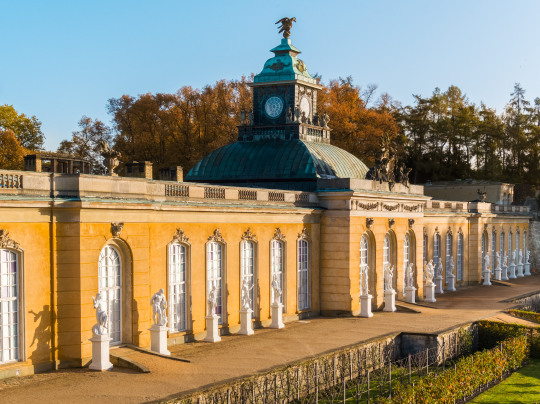
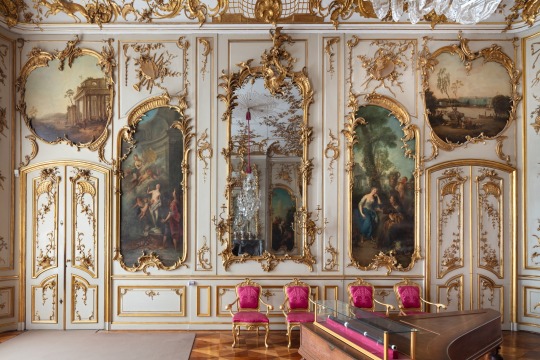

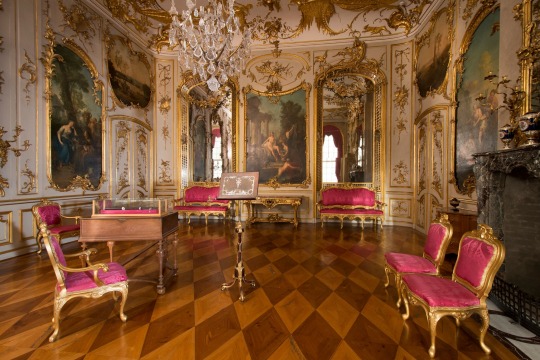

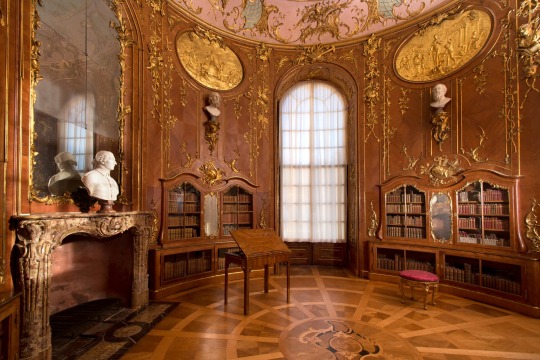






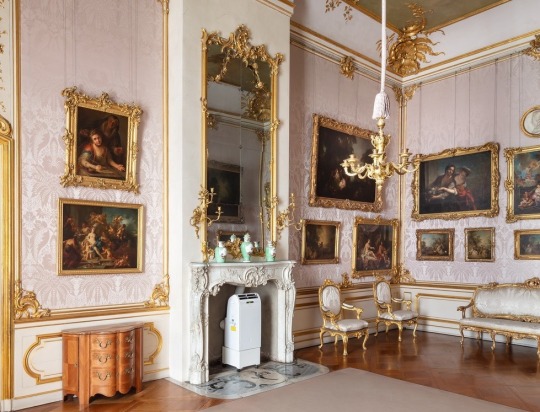








~ “Sanssouci Palace, located in Potsdam in Germany. This Rococó Palace was built in the first half of the 18th century as the summer residence of King Frederick II of Prussia. The building belongs to a group of palaces and park complexes in Potsdam and Berlin that have been on the UNESCO World Heritage List since 1990. Visitors can admire, among others, the royal apartments, the Audience Hall, the library and the Concert Hall, which is a remarkable work of Prussian roccocó. The palace also has terrace gardens and the tomb of Frederic II. The author of the palace project was Georg Wenzeslaus von Knobelsdorff. In the first half of the 19th century, the residence was rebuilt by Ludwig Persius and Ferdinand von Arnim at the request of the King of Prussia Frederick William IV.“ ~
5 notes
·
View notes
Text
Mütter - Mütter
Autor: Rene Rilz (Hrsg.)
Illustration: Johannes Gerber
Titel: Mütter - Mütter -- Briefe - Erzählungen - Gedichte
Einband: Hardcover
Verlag: Steinheim Verlag
Erschienen: 1983
Sprache: Deutsch
ISBN: 3889520022
ISBN-13: 9783889520029
- Adelbert von Chamisso
- Anna Schieber
- Annette von Droste-Hülshoff
- Anselm Feuerbach
- Arthur Schopenhauer
- Bettina von Arnim
- Caroline Schlegel-Schelling
- Christiane Vulpius
- Clemens Brentano
- Conrad Ferdinand Meyer
- Eduard Mörike
- Else Lasker-Schüler
- Erich Kästner
- Ernst Moritz Arndt
- Ernst Wiechert
- Eva Rechlin
- Franz Werfel
- Friedrich Güll
- Friedrich Hebbel
- Friedrich Nietzsche
- Friedrich Schiller
- Gabriele von Bülow
- Gabriele Wohmann
- Gerrit Engelke
- Gottfried Keller
- Hans Christian Andersen
- Heinrich Heine
- Jakob Kneip
- Johann Peter Hebel
- Johann Wolfgang von Goethe
- Johanna Schopenhauer
- Joseph Wittig
- Justinus Kerner
- Karl Bröger
- Karl Friedrich von Klöden
- Karl Immermann
- Klabund
- Kurt Schwitters
- Lisa Tetzner
- Lisa-Marie Blum
- Ludwig Uhland
- Maria Theresia
- Marie von Ebner-Eschenbach
- Martin Luther
- Matthias Claudius
- Max Herrmann-Neiße
- Nikolaus Lenau
- Novalis
- Paula Modersohn-Becker
- Robert Schumann
- Rudolf Virchow
- Theodor Fontane
- Theodor Körner
- Theodor Mommsen
- Theodor Storm
- Ulrich Bräker
- Wilhelm Busch
- Wilhelm Raabe
- Wilhelm Tischbein
- Wilhelm von Kügelgen
- Wilhelm Waiblinger
- Wolfgang Koeppen
Read the full article
#AdelbertvonChamisso#AnnaSchieber#AnnettevonDroste-Hülshoff#AnselmFeuerbach#ArthurSchopenhauer#BettinavonArnim#CarolineSchlegel-Schelling#ChristianeVulpius#ClemensBrentano#ConradFerdinandMeyer#EduardMörike#ElseLasker-Schüler#ErichKästner#ErnstMoritzArndt#ErnstWiechert#EvaRechlin#FranzWerfel#FriedrichGüll#FriedrichHebbel#FriedrichNietzsche#FriedrichvonSchiller#GabrielevonBülow#GabrieleWohmann#GerritEngelke#GottfriedKeller#HansChristianAndersen#HeinrichHeineHugoWolf#IrmgardWoltersdorf#JakobKneip#JohannPeterHebel
1 note
·
View note
Photo
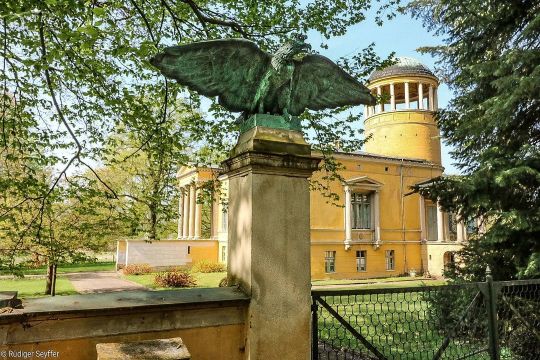
Schloß Lindstedt. Das Schloss gehört zum Park Sabssouci. 1828 erwarb Kronprinz Friedrich Wilhelm IV das Grundstück. Er machte viele Entwürfe und beauftragte 1858 Ferdinand von Arnim mit Entwurf und Bau dieses Schlosses. Peter Joseph Lenné entwarf den Gutsgarten. König Friedrich Wilhelm IV konnte das Schloss nicht mehr bewohnen. Im Schloss lebte unter anderem die Familie von Bülow Vorfahren von Loriot und die Familie Falkenhayn deren Tochter Heiratete 1929 Henning von Treskow, einen der Hitleratentäter. (hier: Schloss Lindstedt) https://www.instagram.com/p/CPP2qp1N6Jc/?utm_medium=tumblr
7 notes
·
View notes
Text
Evading the “Jaws” of Injustice
Hey y’all, for this week, we are going to dive into one of the most interesting military and judicial cases of the 19th and 20th Century. I discovered this topic, much like that of Belzoni through my 19th Century Europe class. This event was one of the biggest mass media events next to the sinking of the Titanic and the Jack the Ripper cases in London, England. Myself, as well as, many of my friends and colleagues have beaten this subject to death by reading a massive synopsis of this court case written thoroughly by a French lawyer. This court case that rocked France to the brink of war was the case known as the Dreyfus Affair. Before we get into the meat of this case, I must discuss the wonders of Geography.

Most people looking at a map can point out the location of France. For those who do not know, it is in Western Europe bordering Spain, Andorra, Italy, Belgium, Luxembourg, Switzerland, and their historical rival of Germany. From 1870 to 1871, Germany, known as Prussia at the time, declared war against France through the artful statesman of the Iron Chancellor, Otto von Bismarck. The war was a result of Prussia’s ambition to have a unified German state. France saw this as a threat to their own ambitions. Prussia, coming from a very strong military tradition defeated France’s forces. The peace deal humiliated France and with that the historic area of Alsace-Lorraine (two geographic areas that form together). Today it is part of France, but historically the area, often through peace deals in war, has been traded back and force between France and Germany. Alsace-Lorraine has formed a unique language and cultured based on these circumstances. It is also a beautiful area where I spent a good chunk of time while on a trip to Europe. Now, reading this, you many really confused on why I am getting over excited about French and German geography. To answer this possible question, during the Dreyfus Affair, the Alsace-Lorrain region -specifically Alsace- was controlled by Germany. The man in question, Alfred Dreyfus, was Alsatian.
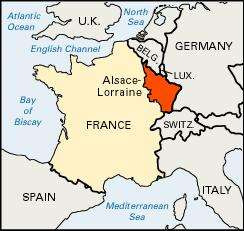
Now regarding Dreyfus’ Alsatian background, you may be wondering why that has anything to do with anything. Before we can talk about the whys, what’s, when’s, where’s, and all the simple questions, we must make it more confusing. Before Alfred served alongside Batman, he was an artillery officer in the French army who served as part of the General’s staff. One day, a lady was cleaning out an office and discovered a handwritten letter in the German Embassy in Paris. The letter was like a shopping list but instead of delicious French bread and the makings of a fine breakfast, it was planned from the French army. The list included plans for the use of different artillery as well as a note regarding a French colony off the coast of Africa known as Madagascar. After the letter was examined, the French Counterintelligence hired specialists to comb through their artillery officers handwriting to possibly figure out who wrote the note. This is where Alsace comes into play. Dreyfus was one of the men that the counterintelligence agents suspected. The reason being was that his handwriting was similar, plus he came from Alsace. While when Dreyfus was born, it was a French territory, it was then German. Due to loosely based evidence and the coincidences, Dreyfus was arrested.

The arrest came to a surprise to Dreyfus. I mean anyone accused of anything would be surprised, but Dreyfus was innocent, and most people knew it. His brother, Matthieu heard about the arrest and quickly went to get him out but was unsuccessful. Despite failing to get his brother out of jail, he still did his best to rally support pleading his innocence. Like most trials, there are usually multiple sides. This was the case for the Dreyfus affair as well. Unfortunately, more people were against Dreyfus because he was accused of betraying his country. During the investigation into Dreyfus, many already hated him but it became worse after finding out that he was Jewish. The newspapers and magazines exploded once they found this out. Paris was notorious for its anti-Semitic views. People in every walk of life became involved with this case now. There were those who supported Dreyfus, they called themselves Dreyfusards and there were those who simply hated him because of who he was called Anti-Dreyfusards. Looking at France, political divisions and instability are as common as a cold. This affair quickly engulfed the country, and many in the political arena involved themselves.

While France was fighting itself, literally, Dreyfus was sent to Devil’s Island off the coast of French Guiana. Dreyfus was the only person living on the island, aside from those who were supposed to watch over him. It was possible for Dreyfus to escape, but an escape would only make him more suspicious even if he did not commit any crime. During Dreyfus’ stay on the island he became sick. His French keepers treated him harshly where they eventually confined him to his room where he was chained to his bed. Despite limited mobility, Dreyfus could continue to write to his wife, Lucie. Lucie constantly encouraged Dreyfus to persist even if he felt like giving up and succumbing to his conditions. While Dreyfus sulked on Devil’s Island, he becomes a French national celebrity without knowing it as the affair grew to bigger proportions.

While the military was mixed on their stance during the affair, there were people who approached it neutrally then decided to take a stand. One such figure was Lieutenant Colonel Georges Picquart. Picquart went into the investigation seeking the truth. After discussing it with other French officers, politicians, and other officials, he concluded that Dreyfus was not the culprit. Picquart suggested that the criminal was Major Ferdinand Walsin Esterhazy. Esterhazy was known to indulge himself with liquor and prostitutes, which heavily affected his standing with the military. Despite substantial proof from Picquart that Esterhazy was the real spy, nobody would listen to Picquart. Eventually, the French higher authorities suggest that Picquart needed to take a break from the investigation indefinitely. He was then sent to Tunisia. The higher ups did their best to keep this information away from the press, but it was released eventually due to feuding parties within the military.

Prominent journalists who were Dreyfusards were Emile Zola, Georges Clemenceau (the mustache of WW1 France), and Leon Blum. Zola, who's named sounds like Arnim Zola from Marvel received fame in the middle of this affair because of his writing. The writing, known as J’Accuse, was a letter to the French government heavily criticizing the way that the affair was being handled. This was a huge win for the Dreyfusards. Clemenceau received fame from his magazine, L’Aurore. He was brave enough to publish Zola’s letter. Later, Clemenceau would become the French Prime Minister and Leader during World War One. Like Blum, he was a socialist and deemed radical that was against the Anti-Dreyfusard campaign of injustice. He too would become a French Prime Minister in the years leading up to World War Two. Anyways, the 12-year run of the Dreyfus Affair is about to be wrapped up thanks for Manuel Baudoin.
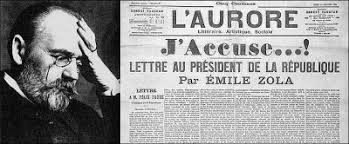
Baudoin was a leading lawyer of the second trial in 1906. He established that everyone and anything involved in this case was to be restored to normal like nothing had happened. This meant that Dreyfus, Picquart and Esterhazy were all free of charges. Which was great, except that it wasn’t. Dreyfus endured years of imprisonment but, became a national celebrity. Picquart suffered humiliation. Esterhazy eventually ran away from France. Some pros that came out of this negative affair was that France reviewed itself. Monarchist and reactionary forces did not win, but it was a huge success for a more democratic France. Dreyfus was reinstated with his rank and served France diligently. He fought in World War One and made it to 1935 which was one year before Europe fell into World War Two. Picquart died in 1914 due to a horse-riding accident, the same year WW1 started. The Dreyfus Affair was a mess, but it was one of the most publicized events in the world during its time. It is a neat piece of French, European, and journalistic history. Unfortunately, this was the second largest affair to rock France. While it had more of political implication, the Faure Affair where a French president was killed by his mistress is considered the first. I will leave you all with one last fun fact. Richard Dreyfus, the actor who played in Mr. Holland’s Opus and Jaws consider himself to be a descendant or close relative to Alfred Dreyfus. Richard Dreyfus also starred in the movie titled A Prisoner of Honor, where he played Picquart. Anyways, there is the Dreyfus Affair.

Next Week: Kurt Cobain and Nirvana
0 notes
Photo

🎶Music Room, Schloss Sanssouci in Germany was the summer palace of Frederick the Great, King of Prussia, in Potsdam, near Berlin. It is often counted among the German rivals of Versailles. While Sanssouci is in the more intimate Rococo style and is far smaller than its French Baroquecounterpart, it too is notable for the numerous temples and follies in the park. The palace was designed/built by Georg Wenzeslaus von Knobelsdorff between 1745 and 1747 to fulfill King Frederick's need for a private residence where he could relax away from the pomp and ceremony of the Berlin court. The palace's name emphasises this; it is a French phrase (sans souci), which translates as "without concerns", meaning "without worries" or "carefree", symbolising that the palace was a place for relaxation rather than a seat of power. The name in past times reflected a play on words, with the insertion of a comma visible between the words Sans and Souci, viz. Sans, Souci. 🎵 Kittsteiner theorizes that this could be a philosophical play on words, meaning "without a worry/concern" or it could be some secret personal message which nobody has interpreted, left to posterity by Frederick II. Sanssouci is little more than a large, single-story villa—more like the Château de Marly than Versailles. Containing just ten principal rooms, it was built on the brow of a terraced hill at the centre of the park. The influence of King Frederick's personal taste in the design and decoration of the palace was so great that its style is characterised as "Frederician Rococo", and his feelings for the palace were so strong that he conceived it as "a place that would die with him".[2]Because of a disagreement about the site of the palace in the park, Knobelsdorff was fired in 1746. Jan Bouman, a Dutch architect, finished the project. 🎵During the 19th century, the palace became a residence of Frederick William IV. He employed the architect Ludwig Persius to restore and enlarge the palace, while Ferdinand von Arnim was charged with improving the grounds and thus the view from the palace. https://www.instagram.com/p/BxtMVccHpUB/?igshid=gc7a85jcvpvn
1 note
·
View note
Photo



Eugen Diederichs (* 22. Juni 1867 in Löbitz; † 10. September 1930 in Jena) war ein bedeutender deutscher Verleger. 1896 gründete er seinen Verlag in Florenz, dessen breit gefächertes Programm sich auf Werke der deutschen Romantik und Klassiksowie Schriften der Antike und Friedrich Nietzsches erstreckte. Heute ist der Verlag ein Imprint der Verlagsgruppe Random Housein München.
Erst 1949 konnte der Verlag in Düsseldorf und Köln neu gegründet werden. Er existiert noch heute, war von 1988 bis 2008 ein Imprint des Heinrich Hugendubel Verlags München und gehört seit Mai 2008 zur Verlagsgruppe Random House.
Das Relief mit dem Logo des Eugen Diederichs Verlags war am 1945 zerstörten Verlagshaus am Carl-Zeiß-Platz in Jena angebracht und ziert heute den Nachfolgerbau an gleicher Stelle.
Eugen Diederichs wurde auf dem Landgut Löbitz bei Osterfeld/Thüringen geboren und verbrachte seine Kinder- und Jugendjahre ab 1872 in Naumburg. Er ließ sich auf Wunsch seines Vaters Carl Friedrichs nach dem Einjährigen zum Landwirt ausbilden und arbeitete anschließend als Verwalter auf verschiedenen Höfen.
1888 folgte er seiner eigentlichen Neigung und ließ sich in Halle zum Buchhändler beim theologischen Verlag Eugen Strien ausbilden. In den folgenden Jahren arbeitete er als Sortimenter in verschiedenen Buchhandlungen (unter anderem in der Stuberschen Buchhandlung in Würzburg und in der Menckeschen Buchhandlung in Erlangen). Seine Vorliebe fürs Reisen zeigte sich schon 1892, als er die erste größere Unternehmung vom Oberrhein und dem Elsass in die Schweiz über die französischen Alpen nach Spanien und schließlich nach Bordeaux machte. Bereits als junger Mann erfuhr er einen Nervenzusammenbruch und litt unter starken Depressionen. Nicht selten sollten die Reisen auch der Genesung seiner depressiven Phasen dienen.
Als es ihn 1896 nach Italien zog, entschied er sich, in Florenz einen Verlag zu gründen. In einem Brief aus Venedig an Ferdinand Avenarius vom 1. September schrieb er: „Ich will mich […] diesen Moment gründen unter der Firma: E. Diederichs, Florenz und Leipzig – Verlag für moderne Bestrebungen in Literatur, Naturwissenschaft, Sozialwissenschaft und Theosophie […] Ich habe den kühnen Plan, ich möchte einen Versammlungsort moderner Geister haben.“
Die ersten Veröffentlichungen waren Gedichtbände von Emil Rudolf Weiß und Ferdinand Avenarius, wobei Diederichs der große Erfolg 1897 mit Hans Blums Die deutsche Revolution 1848/49 gelang. Im gleichen Jahr siedelte das Unternehmen nach Leipzigüber. Zu den Publikationen der frühen Jahre gehört auch das zweite Buch von Hermann Hesse Eine Stunde hinter Mitternacht(1899).
Im folgenden Jahr heiratete Diederichs Helene Voigt, die zum Zeitpunkt der Bekanntschaft als Autorin für die Schleswig-Holsteiner Landsleute tätig war. Mit ihr hatte er vier Kinder: Ruth, Jürgen, Niels und Peter Diederichs. Im Jahr der Hochzeit gab er Wilhelm Bölsches Das Liebesleben in der Natur in drei Bänden heraus. Er begann die ersten Werkausgaben von Jens Peter Jacobsen, Novalis und Maurice Maeterlinck herauszugeben, denen weitere folgten, so von John Ruskin, Leo Tolstoi, Anton Tschechow und Friedrich Hölderlin. Diederichs konzipierte in den nächsten drei Jahrzehnten mehrere Reihen und Serien, was seine Tätigkeit als Verleger kennzeichnete. Als erste Reihe erschien 1899 Monographien zur deutschen Kulturgeschichte, die 1905 allerdings nach zwölf Bänden erfolglos eingestellt werden musste. Ferner eröffnete er die Reihen Erzieher zu deutscher Bildung (1904), Die Kunst in Bildern (1909) und Religion und Philosophie Chinas (1910).
1904 zog der Verleger mit seiner Familie von der Metropole des Buchhandels Leipzig nach Jena um (Sitz bis 1948). Drei Jahre nach der Übersiedlung des Verlags wurde er Mitglied des Deutschen Werkbundes.
Der erste Verlagskatalog erschien 1908 unter dem Titel Wege zur deutscher Kultur, in dem der Verleger seinen Gesamtbestand in sieben Kategorien aufteilte. Neben der Sparte Schriften der Antike, der deutschen Mystik, der italienischen Renaissance sowie der deutschen Klassik und Romantik enthielt das Verzeichnis die Bereiche Bücher zu Friedrich Nietzsche, Einzeltitel kulturtheoretischer und lebensphilosophischer Ausrichtung und Werke der Weltliteratur als Bezugspunkte für die „deutsche Kultur“.
In der ersten Kategorie erschienen Werke von Platon, Aristoteles und Plotin sowie Meister Eckeharts Schriften und Ekstatischen Konfessionen von Martin Buber. Von den Romantikern waren Friedrich Hölderlin, Friedrich von Schlegel, Friedrich Schleiermacher und Bettina von Arnim vertreten. Das wichtigste Buch der zweiten Abteilung war Carl Albrecht Bernoullis Franz Overbeck und Friedrich Nietzsche, das dem verklärten Nietzsche-Bild des Nietzsche-Archivs entgegenwirkte.
Weiterhin verlegte er die Werke des Sozialphilosophen und Malers John Ruskin, der ihm als Vorbild diente, und Bücher deutschsprachiger Autoren wie Wilhelm Bölsche, Bruno Wille, Hermann Löns und Carl Spitteler. Auch Arbeiterliteratur ließ Diederichs von seinem Lektor Paul Göhre herausbringen, so Das Leben eines Landarbeiters von Franz Rehbein.
Das breit gefächerte Verlagsprogramm verdeutlichte Diederichs Anspruch, einen universellen Kulturverlag zu führen, dessen Ausrichtung jedoch von seiner persönlichen Entwicklung und individuellen Weltempfinden abhing. Nach und nach wurde das Profil des Unternehmens von religiösen und antirationalistischen Schriften durchdrungen und „neuromantischen“ Autoren wie Ludwig Coellen, Karl Joel und Erwin Kircher geprägt. Zugleich sollte der Verlag zur Anlaufstelle von nationalkonservativem Schrifttum werden. Ein Teil der Romanliteratur war der Heimatkundebewegung zuzuordnen, die gegen die Industrialisierung und Technisierung Deutschlands gerichtet war.
Zu den Autoren des Verlages zählte auch seine eigene Frau Helene Voigt-Diederichs, die Aus Kinderland (1907) und den Novellenband Nur ein Gleichnis veröffentlichte. Nach Affären von Helene Voigt-Diederichs mit Max Scheler und Erich Kuithan kam es 1908 zu einer Ehekrise, die 1911 zur Scheidung des Ehepaars Diederichs führte. Ein Jahr später übernahm Eugen Diederichs die kulturpädagogische Zeitschrift Die Tat (Eine sozial-religiöse Monatsschrift für deutsche Kultur), die er seit 1913 selbst herausgab. Diederichs gilt als Mentor des freistudentischen Serakreis in Jena.
Seit dem 18. April 1916 war er mit der Schriftstellerin Lulu von Strauß und Torney verheiratet, die ebenfalls einige ihrer Schriften im Verlag herausbrachte und aktiv mitarbeitete.
Kurz vor dem Ersten Weltkrieg konzentrierte sich der Verleger mehr und mehr auf die Herausgabe von Büchern, die im Zeichen einer „Volkstumbewegung“ standen. Diese Ausrichtung des Programms sollte das Profil des Unternehmens unter Beibehaltung früherer Akzente in den 1920er Jahren maßgeblich mitbestimmen. Eine weitere Annäherung an den Nationalsozialismus zeigte sein Beitrag Krisis des deutschen Buches, den er in den Mitteilungen des von Alfred Rosenberg initiierten völkischgesinnten, antisemitischen Kampfbunds für deutsche Kultur publizierte.
Diederichs war Mitglied der Freimaurerloge Urania zur Unsterblichkeit in Berlin; in seinem Verlag erschienen zahlreiche bedeutende freimaurerische Werke.
Nach dem Tod Eugen Diederichs’ 1930 übernahmen seine Söhne Niels und Peter Diederichs mit Hilfe von Lulu von Strauß und Torney sowie Max Linke die Leitung des Unternehmens.
In den 1930er und 1940er Jahren stand der Name „Diederichs“ weiterhin für die von Eugen Diederichs vorgegebenen Inhalte und Ziele, auch für jene der Völkerverständigung. Da die Ausrichtung des Verlages auf einer nationalkonservativen Tradition beruhte, konnte der Betrieb während des Nationalsozialismus durch eine Anpassungsstrategie weiterhin bestehen. Dennoch bekam das Unternehmen die Zensurmaßnahmen der NS-Regierung früh zu spüren. 1933 musste Hans Zehrer, der Herausgeber der Tat, seine Position auf Geheiß der NSDAP aufgeben, ab 1935 war der Titel im Handel nicht mehr erhältlich. Auch die Bücher von Richard Benz, einem der wichtigsten Autoren des Verlages, fielen der Zensur zum Opfer und so wurde 1935 die Veröffentlichung seines Werkes Geist und Reich verboten. Ungeachtet dessen erschien ein Jahr später bei Diederichs ein neuer Titel von Benz, der aufgrund seines weniger verdächtigen Namens – Vom Erdenschicksal ewiger Musik – veröffentlicht werden konnte.
Edwin Erich Dwinger, der seit Beginn der 1930er Jahre einen Hauptteil der Verlagseinnahmen ausmachte, bekam 1942 aufgrund seiner Schrift Zwischen Weiß und RotProbleme mit den Zensurbehörden. Allerdings blieb die Zahl der verbotenen Bücher während der NS-Zeit überschaubar; neun Werke wurden als ausdrücklich unerwünscht von der Regierung deklariert, während z. B. S. Fischer zwischen 1933 und 1944 123 Bücher aus seinem Verlagsprogramm streichen musste. Es wurden aber auch Bücher von Herman Wirth, dem Gründer des Ahnenerbes, verlegt.
Als Niels und Peter Diederichs 1939 eingezogen wurden, übernahm Max Linke die alleinige Leitung des Verlages. 1946 wurde er von Soldaten der Roten Armee verhaftet und starb am 17. September 1947 im Speziallager Sachsenhausen.
Buchkunst
Ein Hauptanliegen des Verlegers war es, edle Gebrauchsbücher herzustellen. Diese sollten sich von der üblichen Massenware ebenso absetzen wie von repräsentativen Pracht-Ausgaben. Für ihn stellte das Buch ein Gesamtkunstwerk dar, bei dem alle Materialien (Papier, Einband, Umschlag usw.) aufeinander abgestimmt sein mussten. Die äußere Gestalt des Buches sollte wiederum zum Inhalt des Werkes passen. Diederichs Vorbild hierbei war William Morris, der sich seinerseits auf die Buchkunst des Mittelalters bezog.
Eine herausgehobene Rolle bei der Ausschmückung der Publikationen spielte der Innentitel, der den ersten Eindruck über Inhalt und Ausrichtung des Buches vermittelte. Außerdem legte Diederichs Wert darauf, holzfreies, raues, nicht glänzendes Papier zu verwenden, das zusammen mit dem Natureinband einen traditionellen handwerklichen Eindruck ergab. Weiterhin lag dem Verleger an einer künstlerisch geschnittenen Schrift, und auch der Aufdruck, der Buchschnitt und das Vorsatzpapiermussten farblich aufeinander abgestimmt sein.
Während die Buchausstattungen in den Leipziger Jahren von Jugendstil und Biedermeier beeinflusst waren, versuchte der Verleger seit der Jenaer Zeit eine weniger verspielte Ausformung seiner Veröffentlichungen zu konzipieren. Die opulente Verzierung wich dem Anliegen, eine größere Einfachheit bei der Gestaltung der Werke zu erreichen, die dennoch dekorativ wirken sollten. Beschäftigte Diederichs in Leipzig hauptsächlich Künstler wie Heinrich Vogeler und Johann Vincenz Cissarz, kam es in Jena zur Zusammenarbeit mit Fritz Helmuth Ehmcke und Peter Behrens, der 1907/08 eine neue Antiqua-Schrift entwickelte. Außerdem traten Friedrich Hermann Ernst Schneidler, Marie Bock, Anna Gramatyka, Wilhelm Schulz und Erich Kuithan als Gestalter neu hinzu.
Besonders durch die Zusammenarbeit mit dem Holzschnitzer, Maler und Graphiker Max Thalmann, der bis zu seinem Tod 1944 künstlerischer Beirat des Verlags war und eine Reihe von Büchern selbst gestaltete, gelang es Diederichs in den folgenden Jahren, seinen Verlagsproduktionen einen möglichst einheitlichen Stil zu verleihen.
Auszeichnungen
Im Jahr 1900 erhielt Diederichs die Bronzemedaille für seine buchkünstlerischen Leistungen auf der Weltausstellung in Paris. Es folgte der erste Preis der Dresdner Kunstgewerbe-Ausstellung 1906 sowie eine Auszeichnung beim Grand Prix der Weltausstellung in Brüssel 1910.
1924 verlieh die Universität Köln auf Vorschlag von Friedrich von der Leyen Eugen Diederichs die Ehrendoktorwürde. Zu seinem sechzigsten Geburtstag ernannte ihn die Stadt Jena zum Ehrenbürger.
0 notes
Photo
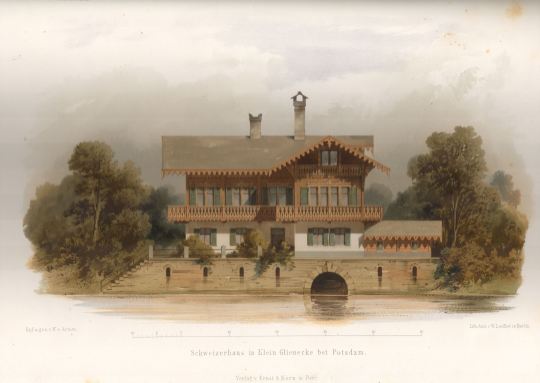
A Swiss House in Klein Glienicke built by Arnim
2 notes
·
View notes
Photo

Gartensaal des Gutshauses Wiepersdorf - Ferdinand von Arnim (1814–1866)
1 note
·
View note
Photo

Theaterwand und Normannenturm auf dem Ruinenberg. Die Theaterwand gehört zur ursprünglichen von Friedrich dem 2. beauftragten und von Georg Wenzeslaus von Knobelsdorf um 1744 ausgeführten Bebauung des Ruinenberges Hier befand sich eine Aussichtsplatform. Unter Friedrich Wilhelm dem 4. entstand um 1846 also gut 100 Jahre später der 23 m hohe Normanenturm. den Entwurf übernahm Ludwig Persius. Die Ausführung oblag Ferdinand von Arnim. Die Aussichtsplatform war bereits wärend der französischen Besetzung unbrauchbar geworden. (hier: Normannischer Turm/ Ruinenberg) https://www.instagram.com/p/CPVNKIEN9WY/?utm_medium=tumblr
0 notes
Photo



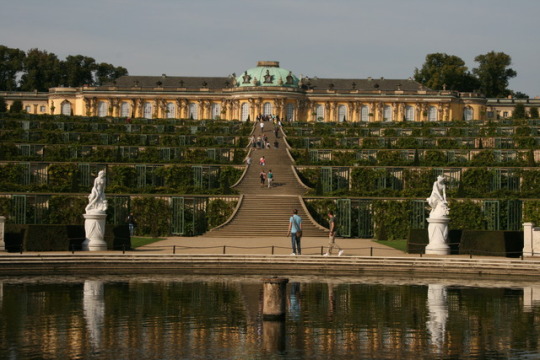

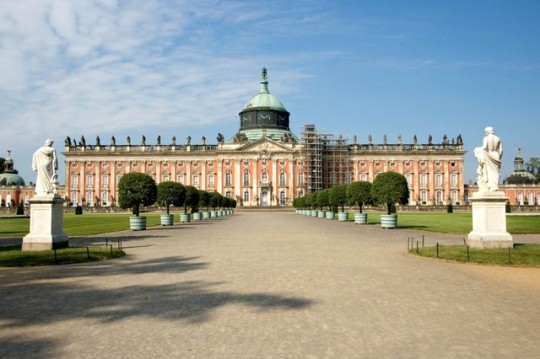


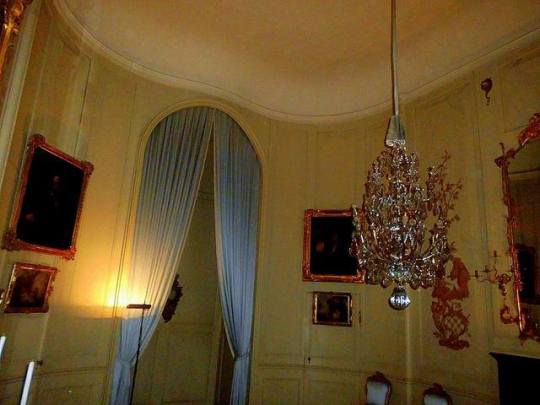








Sanssouci
Sanssouci is the summer palace of Frederick the Great, King of Prussia, in Potsdam, near Berlin. It is often counted among the German rivals of Versailles. While Sanssouci is in the more intimate Rococo style and is far smaller than its French Baroque counterpart, it too is notable for the numerous temples and follies in the park. The palace was designed/built by Georg Wenzeslaus von Knobelsdorff between 1745 and 1747 to fulfill King Frederick's need for a private residence where he could relax away from the pomp and ceremony of the Berlin court. The palace's name emphasises this; it is a French phrase (sans souci), which translates as "without concerns", meaning "without worries" or "carefree", symbolising that the palace was a place for relaxation rather than a seat of power. The name in past times reflected a play on words, with the insertion of a comma visible between the words Sans and Souci, viz. Sans, Souci. Kittsteiner theorizes that this could be a philosophical play on words, meaning "without, beware" or it could be some secret religious message which nobody has interpreted, left to posterity by Frederick II.
Sanssouci is little more than a large, single-story villa—more like the Château de Marly than Versailles. Containing just ten principal rooms, it was built on the brow of a terraced hill at the centre of the park. The influence of King Frederick's personal taste in the design and decoration of the palace was so great that its style is characterised as "Frederician Rococo", and his feelings for the palace were so strong that he conceived it as "a place that would die with him". Because of a disagreement about the site of the palace in the park, Knobelsdorff was fired in 1746. Jan Bouman, a Dutch architect, finished the project.
During the 19th century, the palace became a residence of Frederick William IV. He employed the architect Ludwig Persius to restore and enlarge the palace, while Ferdinand von Arnim was charged with improving the grounds and thus the view from the palace. The town of Potsdam, with its palaces, was a favourite place of residence for the German imperial family until the fall of the Hohenzollern dynasty in 1918.
After World War II, the palace became a tourist attraction in East Germany. Following German reunification in 1990, Frederick's body was returned to the palace and buried in a new tomb overlooking the gardens he had created. Sanssouci and its extensive gardens became a World Heritage Site in 1990 under the protection of UNESCO; in 1995, the Foundation for Prussian Palaces and Gardens in Berlin-Brandenburg was established to care for Sanssouci and the other former imperial palaces in and around Berlin. These palaces are now visited by more than two million people a year from all over the world.
The location and layout of Sanssouci above a vineyard reflected the pre-Romantic ideal of harmony between man and nature, in a landscape ordered by human touch. Winemaking, however, was to take second place to the design of the palace and pleasure gardens. The hill on which Frederick created his terrace vineyard was to become the focal point of his demesne, crowned by the new, but small, palace—"mein Weinberghäuschen" ("my little vineyard house"), as Frederick called it. With its extensive views of the countryside in the midst of nature, Frederick wanted to reside there sans souci ("without a care") and to follow his personal and artistic interests. Hence, the palace was intended for the use of Frederick and his private guests—his sketch (illustration) indicated the balanced suites "pour les etrangers" and "pour le roy"— only during the summer months, from the end of April to the beginning of October.
Twenty years following his creation of Sanssouci, Frederick built the New Palace (Neues Palais) in the western part of the park. This far larger palace was in direct contrast to the relaxed ethos behind Sanssouci, and displayed Frederick's power and strength to the world, in the Baroque style. The design of the New Palace was intended to demonstrate that Prussia's capabilities were undiminished despite its near defeat in the Seven Years' War. Frederick made no secret of his intention, even referring to the new construction as his "fanfaronnade" ("showing off").
This concept of a grand palace designed to impress has led to the comparison of the palaces of Potsdam to Versailles, with Sanssouci being thrust into the role of one of the Trianons. This analogy, though easy to understand, ignores the original merits of the concept behind Sanssouci, the palace for which the whole park and setting were created. Unlike the Trianons, Sanssouci was not an afterthought to escape the larger palace, for the simple reason that the larger palace did not exist at the time of Sanssouci's conception; and once it did, Frederick almost never stayed in the New Palace except on rare occasions when entertaining diplomats he wished to impress. It is true, however, that Sanssouci was intended to be a private place of retreat rather than display of power, strength and architectural merit. Unlike the Trianons, Sanssouci was designed to be a whole unto itself.
Sanssouci is small, with the principal block (or corps de logis) being a narrow single-storey enfilade of just ten rooms, including a service passage and staff rooms behind them. Frederick's amateur sketch of 1745 (illustrated above)demonstrates that his architect, Knobelsdorff, was more a draughtsman at Sanssouci than complete architect. Frederick appears to have accepted no suggestions for alteration to his plans, refusing Knobelsdorff's idea that the palace should have a semi-basement storey, which would not only have provided service areas closer at hand, but would have put the principal rooms on a raised piano nobile. This would have given the palace not only a more commanding presence, but also would have prevented the problems of dampness to which it has always been prone. However, Frederick wanted an intimate palace for living: for example, rather than scaling a large number of steps, he wanted to enter the palace immediately from the garden. He insisted on a building on the ground level, of which the pedestal was the hill: in short, this was to be a private pleasure house. His recurring theme and requirement was for a house with close connections between its style and free nature. The principal rooms, lit by tall slender windows, face south over the vineyard gardens; the north façade is the entrance front, where a semicircular cour d'honneur was created by two segmented Corinthian colonnades.
In the park, east of the palace, is the Sanssouci Picture Gallery, built from 1755 to 1764 under the supervision of the architect Johann Gottfried Büring. It stands on the site of a former greenhouse, where Frederick raised tropical fruit. The Picture Gallery is the oldest extant museum built for a ruler in Germany. Like the palace itself, it is a long, low building, dominated by a central domed bow of three bays.
Following the death of Frederick a new era began, a visible sign of which was the change in architectural styles. Neo-Classicism, popular elsewhere in Europe but ignored by Frederick, now found its way to Potsdam and Berlin during the reign of the new king Frederick William II. He ordered the construction of a new palace in the new more fashionable style, and stayed at Sanssouci only occasionally.
The reception and bedrooms were renovated and completely altered immediately after Frederick's death. Frederick William von Erdmannsdorff received the commission for the refurbishment. While Frederick had been constructing the New Palace in the Baroque style between 1763 and 1769, Erdmannsdorff, an advocate of the new neo-classical style, had created Schloss Wörlitz in Wörlitz Park, the first neo-classical palace in Germany. As a result of his influence, Sanssouci became the first of the palaces in Potsdam and Berlin to be remodelled with a neo-classical interior. In 1797, Frederick William II was succeeded by Frederick William III; he visited Sanssouci even less frequently than did his father, preferring to spend the summer months in Paretz Palace or on the Pfaueninsel in Berlin.
youtube
2 notes
·
View notes
Photo

Auf dem Ruinenberg.
Hier zu sehen der Monopterus mit der zerstörten Kuppel ein Teil der Ionischen Säulen mit Gebälk und der Normannenturm. Während der Monopterus und die Säulen bereits 1748 unter Friedrich dem 2. als Staffage für da Speicherbecken geschaffen wurden kam der Normannenturm erst 1845/46 unter Friedrich Wilhelm dem 4. dazu. Der Normannenturm wurde als 23m hoher Turm mit quadratischem Grundriss von Ludwig Persius entworfen und nach dessen Tod von Ferdinand von Arnim fertiggestellt.
0 notes